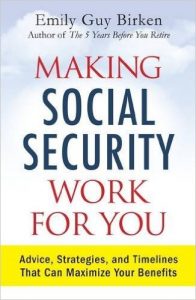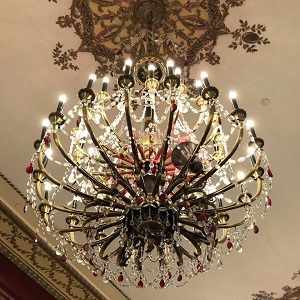 When you move from one job to another, often there is an old 401k plan at the former employer. You have several choices for what you can do with the old 401k plan, and some options are better than others. Some of the options are dependent upon the balance in your old 401k account, as well.
When you move from one job to another, often there is an old 401k plan at the former employer. You have several choices for what you can do with the old 401k plan, and some options are better than others. Some of the options are dependent upon the balance in your old 401k account, as well.
Cash it out. This is typically the worst option. You took advantage of tax-deferral (and company matching) when you contributed the funds to the account. If you simply cash out the old 401k, you’ll have to pay tax on the funds, and if you were under age 55 when you left the employer you will also likely be hit with a 10% penalty for the early withdrawal.
In addition to the tax and penalty, when you take a withdrawal from your 401k plan there is an automatic 20% withholding requirement. You will have credit for this withholding on your tax return, but that could cause a delay of many months before you receive the money.
If your old 401k balance is less than $1,000, your employer has the option to cash out your account without your consent. But all is not lost, you can still complete a rollover into an IRA or a 401k at a new employer – but it must be completed within 60 days (see Indirect Rollover below).
Indirect Rollover. An indirect rollover occurs when you request a distribution of the funds from the old 401k to be given to you in the form of a check made out to you. This is (at the start) the same as cashing out your old 401k – but then you re-deposit the check into an IRA or a new employer’s 401k. If you deposit the entire amount of your old 401k into a new tax-deferred account, there will be no tax ramifications.
This is where the previously-mentioned 20% withholding can cause problems. As mentioned before, when you take a cash-out withdrawal from your 401k there is a mandatory 20% withholding. When you go to re-deposit the funds, in order to avoid taxation you’ll need to come up with the withheld 20% to make the rollover complete.
For example, Laura left her former employer, where she had a 401k plan. This old 401k had a balance of $25,000. Laura wanted to do an indirect rollover – so she asked for a check from the 401k administrator. When she receives her check, the amount is only $20,000. This is because 20% was withheld, as required.
So when Laura completes the indirect rollover, unless she comes up with the missing $5,000 from her savings or some other source, the result will be that she has only rolled over $20,000 – and when she pays taxes for the year, she’ll have an extra $5,000 of income to report. Since Laura was under age 55 when she left the employer, she’ll also have a 10% penalty to pay. Granted, she has the credited $5,000 of withheld tax, but the end result is that her retirement fund is $5,000 less and she had to pay tax and a penalty on the unintended withdrawal.
For this reason alone it’s almost always better to do a Direct Rollover.
Direct Rollover. This is where you direct the old 401k administrator to transfer the funds to either an IRA or a 401k at a new employer. In doing so, the funds have never left the “protection” of a tax-deferred account, so there is no taxation or penalty involved.
In the case of either a direct or indirect rollover into a new employer’s 401k plan, you’ll need to make sure that the new 401k plan allows for this sort of “roll-in” contribution. Most plans do allow this, but some still don’t.
Once you have completed the rollover (either kind) you can then invest the funds in the new account as you wish, and treat the entire account as if it was contributed from your deductible contributions.
Leave it alone. In some cases it can be advantageous to leave the money in the old 401k plan. Typically this is only allowed when your balance is significant, often around $5,000 or more.
You might want to leave the funds at the old employer for a few reasons: first, if you left the employer at or after the age of 55 (but less than 59½), leaving the money with the old 401k provides you the option to utilize the age 55 exception to the 10% penalty. If you transferred the money away from the old 401k you would lose this treatment.
Second, your old 401k may have valuable investment options available that may not otherwise be available to you, such as investments closed to new investors.
Third, if you have highly-appreciated company stock in the old 401k plan, if you don’t stage a rollover properly you might lose valuable tax treatment on the net unrealized appreciation on the stock.
Roth conversion. In addition to the traditional rollovers described above, you can also convert the money to a Roth IRA. Naturally this will cause income tax on the conversion, but depending upon the tax situation this can be a good option to pursue.
You would just transfer the money over to the Roth IRA account and pay tax on the distribution on your tax return for the year. Then you’ll have money in the Roth account that is protected from taxation on qualified withdrawals forever.









 are several exceptions in the Internal Revenue Code that allow an early withdrawal from your IRA or 401k plan without the 10% penalty being imposed. The section of the IRC that deals with quite a few of these exceptions is called Section 72t (referred to as 72t for short), and there are several subsections in this piece of the Code. Each subsection, listed below, has specific circumstances that must be met in order to provide exception to the 10% penalty. Clicking on the link for each subsection will provide you with additional details about that exception.
are several exceptions in the Internal Revenue Code that allow an early withdrawal from your IRA or 401k plan without the 10% penalty being imposed. The section of the IRC that deals with quite a few of these exceptions is called Section 72t (referred to as 72t for short), and there are several subsections in this piece of the Code. Each subsection, listed below, has specific circumstances that must be met in order to provide exception to the 10% penalty. Clicking on the link for each subsection will provide you with additional details about that exception. When you move from one job to another, often there is an old 401k plan at the former employer. You have several choices for what you can do with the old 401k plan, and some options are better than others. Some of the options are dependent upon the balance in your old 401k account, as well.
When you move from one job to another, often there is an old 401k plan at the former employer. You have several choices for what you can do with the old 401k plan, and some options are better than others. Some of the options are dependent upon the balance in your old 401k account, as well. Buying a different car (notice I didn’t say new car) is an event many individuals experience throughout their lifetime. Personally, I have had a number of cars in my lifetime, and I’m sure I’ll have a few more (right now the ol’ mini-van stands at 241,000 miles). My goal is not to spend too much on a depreciating asset, yet make a sensible purchase based on reliability, fuel efficiency and insurance costs. Although some readers may not agree with me, here are some tips on how to really buy a car.
Buying a different car (notice I didn’t say new car) is an event many individuals experience throughout their lifetime. Personally, I have had a number of cars in my lifetime, and I’m sure I’ll have a few more (right now the ol’ mini-van stands at 241,000 miles). My goal is not to spend too much on a depreciating asset, yet make a sensible purchase based on reliability, fuel efficiency and insurance costs. Although some readers may not agree with me, here are some tips on how to really buy a car. Combining and rolling over various retirement accounts is a decision that many individuals will face during their working career and in retirement. For individuals that are already retired, they may consider combining accounts to make required minimum distributions a bit easier (less paperwork, companies to deal with, etc.). Individuals that are still working may consider combining accounts as they switch jobs in an effort to consolidate plans from various employers to their IRA, Roth IRA or current employer plan. What follows are some considerations as well as a handy guide form the IRS regarding what rollovers and consolidations are allowed and specifics for each plan type.
Combining and rolling over various retirement accounts is a decision that many individuals will face during their working career and in retirement. For individuals that are already retired, they may consider combining accounts to make required minimum distributions a bit easier (less paperwork, companies to deal with, etc.). Individuals that are still working may consider combining accounts as they switch jobs in an effort to consolidate plans from various employers to their IRA, Roth IRA or current employer plan. What follows are some considerations as well as a handy guide form the IRS regarding what rollovers and consolidations are allowed and specifics for each plan type.

 Just because an individual has a homeowners policy or renters insurance doesn’t mean that they are covered for everything. Sometimes individuals assume that because they have insurance, they don’t need to worry about checking into specifics. However, without understanding what may or may not be covered, in the event of a claim, it’s better to know beforehand rather than adding insult to injury and finding out there wasn’t coverage.
Just because an individual has a homeowners policy or renters insurance doesn’t mean that they are covered for everything. Sometimes individuals assume that because they have insurance, they don’t need to worry about checking into specifics. However, without understanding what may or may not be covered, in the event of a claim, it’s better to know beforehand rather than adding insult to injury and finding out there wasn’t coverage.

 Did you know that even with the new Social Security rules, it’s possible to work out a strategy to maximize your Social Security benefits? There are options still available (if you were born before 1954) that can provide you with some vestiges of the old “get some now, get more later” option.
Did you know that even with the new Social Security rules, it’s possible to work out a strategy to maximize your Social Security benefits? There are options still available (if you were born before 1954) that can provide you with some vestiges of the old “get some now, get more later” option. Many folks have a 401k plan – it’s the most common sort of retirement savings vehicle that employers offer these days. But there are things about your 401k plan that you probably don’t know – and these secrets can be important to know!
Many folks have a 401k plan – it’s the most common sort of retirement savings vehicle that employers offer these days. But there are things about your 401k plan that you probably don’t know – and these secrets can be important to know!
 Sterling Raskie, MSFS, CFP®, ChFC®
Sterling Raskie, MSFS, CFP®, ChFC® The latest in our Owner’s Manual series, A 401(k) Owner’s Manual, was published in January 2020 and is available on
The latest in our Owner’s Manual series, A 401(k) Owner’s Manual, was published in January 2020 and is available on  A Medicare Owner’s Manual, is updated with 2020 facts and figures. This manual is available on
A Medicare Owner’s Manual, is updated with 2020 facts and figures. This manual is available on  Social Security for the Suddenly Single can be found on Amazon at
Social Security for the Suddenly Single can be found on Amazon at  Sterling’s first book, Lose Weight Save Money, can be
Sterling’s first book, Lose Weight Save Money, can be  An IRA Owner’s Manual, 2nd Edition is available for purchase on Amazon. Click the link to choose the
An IRA Owner’s Manual, 2nd Edition is available for purchase on Amazon. Click the link to choose the  Jim’s book – A Social Security Owner’s Manual, is now available on Amazon. Click this link for the
Jim’s book – A Social Security Owner’s Manual, is now available on Amazon. Click this link for the  And if you’ve come here to learn about queuing waterfowl, I apologize for the confusion. You may want to discuss your question with Lester, my loyal watchduck and self-proclaimed “advisor’s advisor”.
And if you’ve come here to learn about queuing waterfowl, I apologize for the confusion. You may want to discuss your question with Lester, my loyal watchduck and self-proclaimed “advisor’s advisor”.